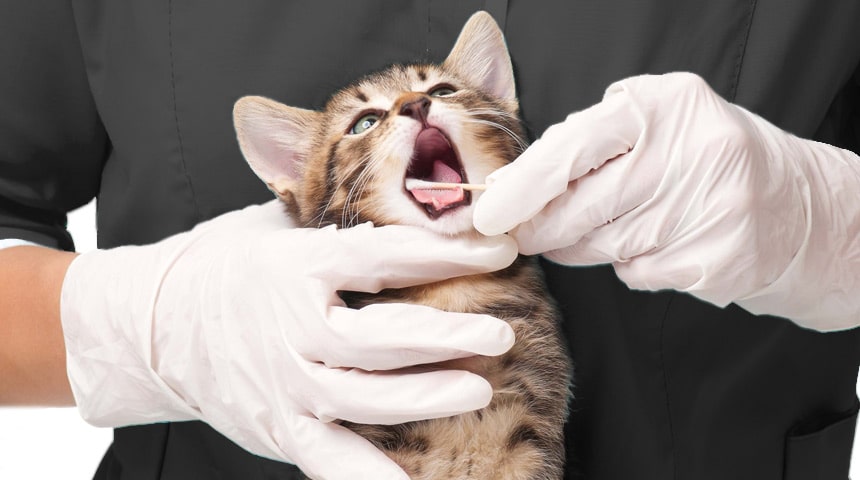
Resorptive lesions are the result of your cat's tooth enamel eroding. The cause of this condition is still unknown. It appears as a small hole in the tooth that will reach the pulp (canal) and cause pain.
The following signs are often seen with this type of lesion:
- Difficulty chewing: the cat will drop her food, bangs her head while eating, refuses to eat kibble and will prefer canned food
- Reduced appetite
- Reduced general activity level
This health issue must be addressed, as it directly affects your cat’s quality of life. Il
Extraction of the affected tooth is often the preferred treatment. With this condition, dental X-rays are essential for two reasons:
- Detect lesions hidden in dental roots
- Determine the best strategy for extraction, which can be complex (fragile roots, roots fused to the bone, etc.)
Since this procedure is quite long, it is advisable to proceed in two stages. First, the teeth are examined and cleaned, and 2 to 4 weeks later, X-rays are taken and the diseased teeth are extracted. This allows for better healing of the extraction sites. In addition, it is always better to have two short anesthesias than a very long one.
To conclude, since the cause of tooth erosion remains unknown, we believe that the best prevention is still scaling and an annual examination of your cat's teeth. This will ensure that your pet's dental health is optimal!

